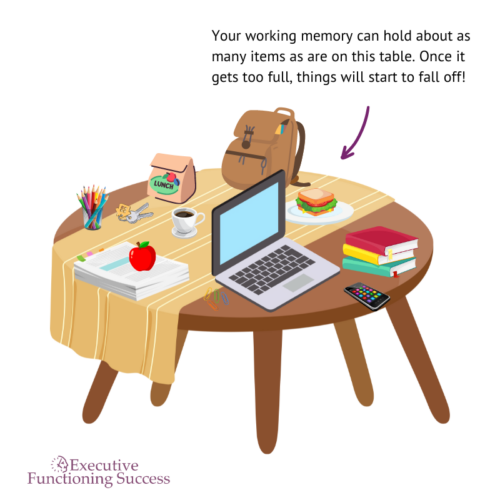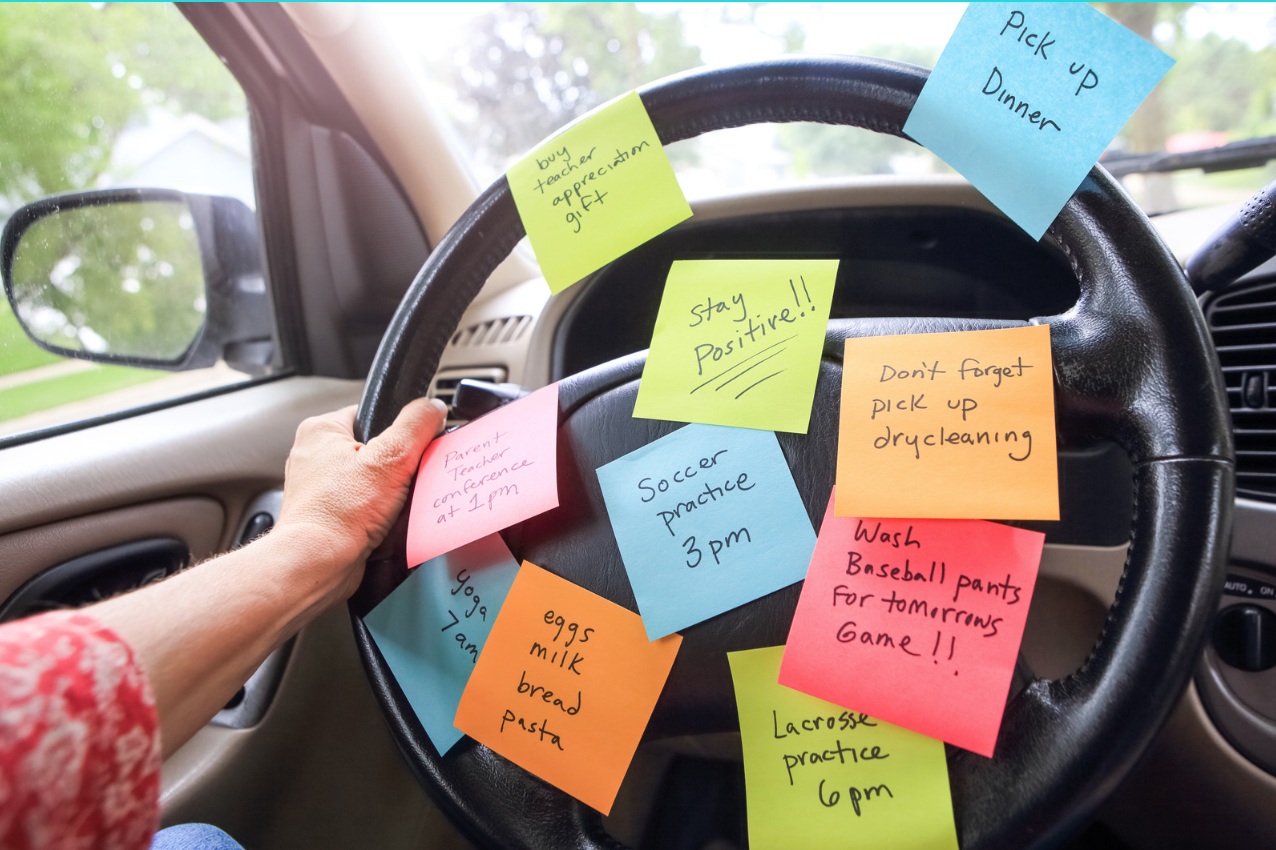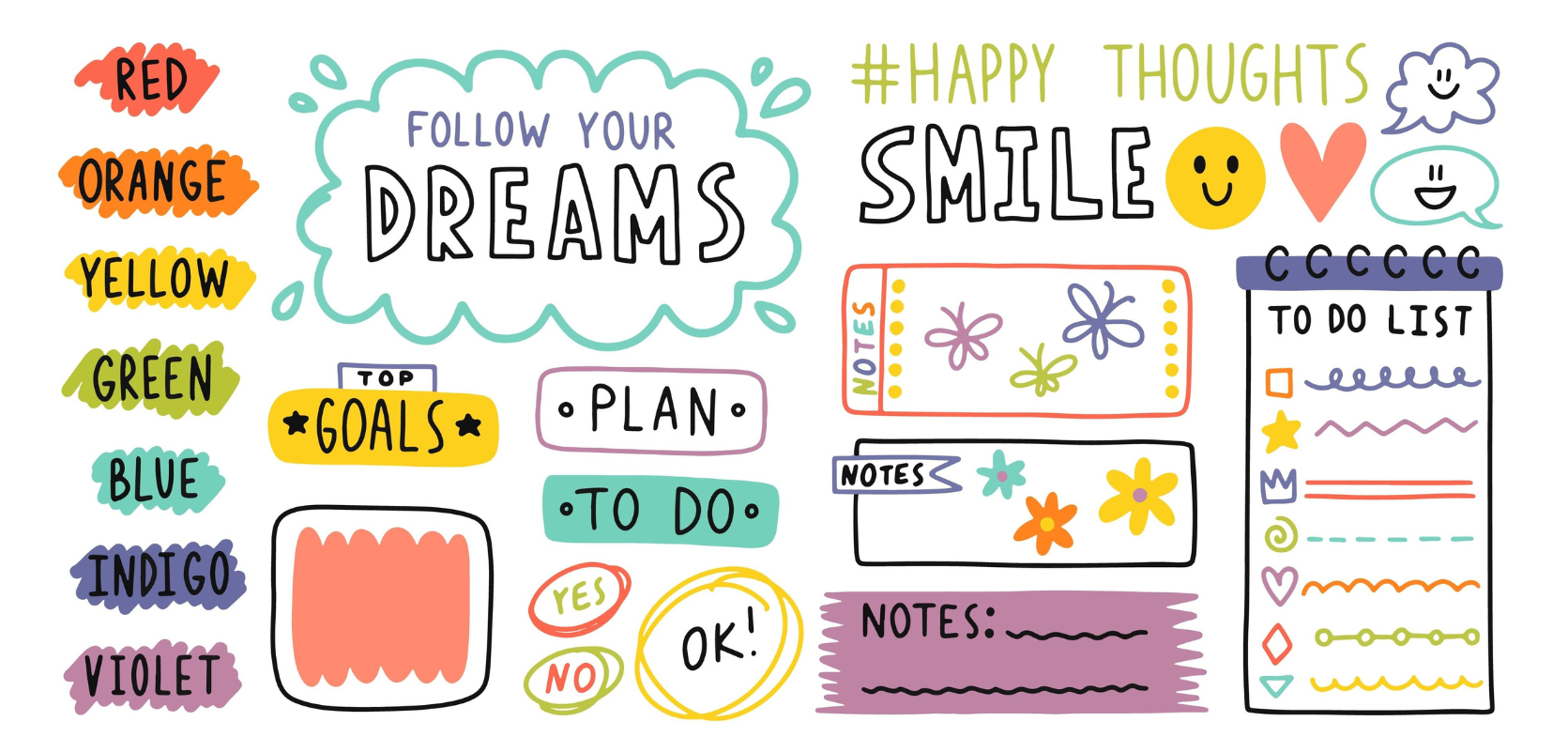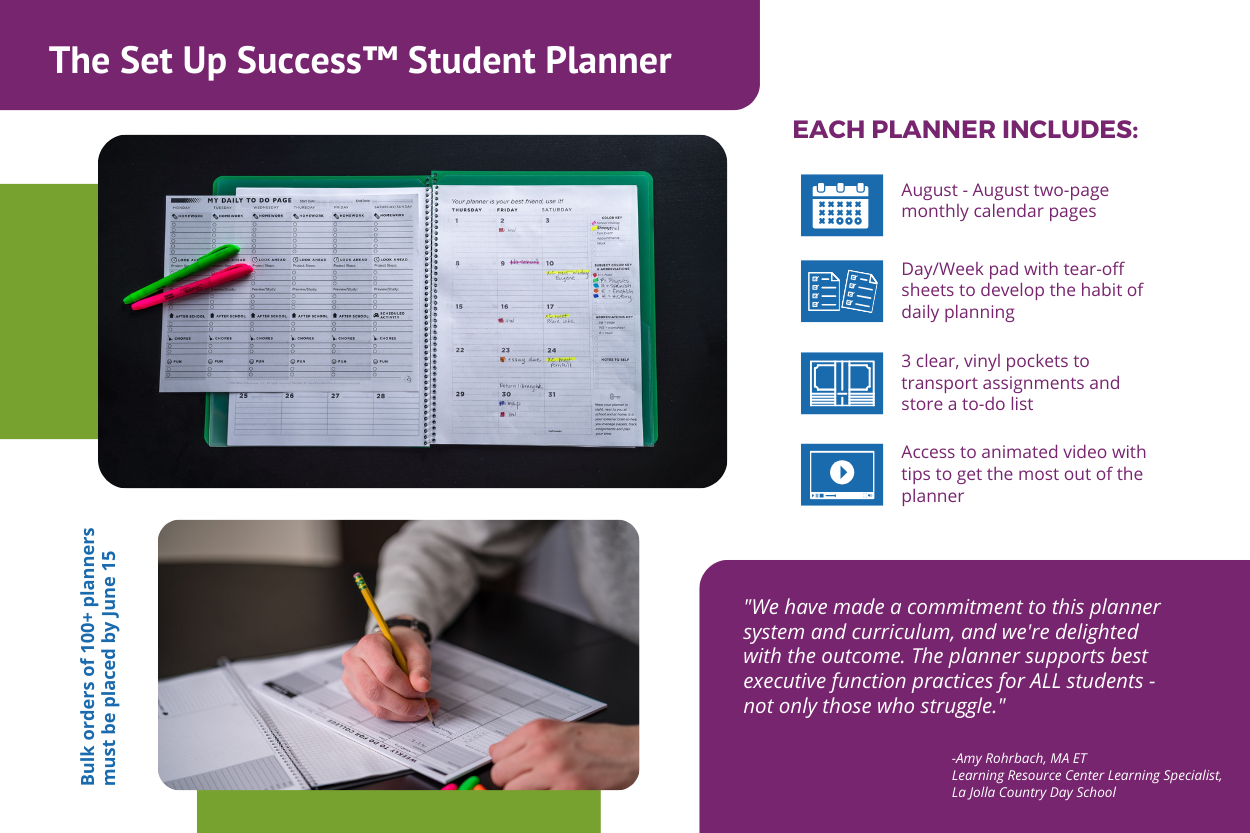Have you ever found yourself entering a room, and then pausing to ask yourself, “Why did I come in here?”
This common situation is an example of the limitations of working memory, an executive function of the brain.
I think of working memory as a little work table in your head. It is where you store your immediate thoughts to work with them. Fun fact: It is the only part of the brain you can be aware of using!

Like the other executive function skills discussed in this series, working memory is primarily associated with the prefrontal cortex.
However, there is a significant difference: the other executive function skills require choice or effort to activate them. Working memory, on the other hand, is hardwired into your brain.
It improves through childhood, plateaus in your mid-twenties and then declines in your forties. In your 60s+ it drops off so much that some seniors begin to worry about cognitive decline. It is the source of “senior moments”, where one seems to forget the simplest things.
So How Much Can Your Working Memory Hold?
There are two very important things to know about working memory:
1. It has a very limited capacity (regardless of your age).2. Your level of working memory directly impacts all of your other executive function skills.
In terms of capacity, it is generally agreed that the little work table in your brain can only hold somewhere between 3-7 chunks of information at a time. That is not much!
This limited working memory capacity explains why you might repeatedly go to a room, stop and wonder why you are there.
Let’s say you are in the kitchen and have a thought, which you put on your brain’s work table: “Oh, I need to get that book to return to the library.” You start marching off to get the book but along the way, you have another thought, and then another, and another and another.
Your original thought about getting the book gets bumped off the brain’s work table by the newer thoughts. Poof! Gone from working memory.

Strategies for Supporting Working Memory
So, how do you get that thought back?
The two best strategies in that scenario are:1. Return to the room where you had the memory or2. Recreate a visual “video review” of what you were doing when you had the thought.
While the original thought is gone from your working memory, thankfully it is also stored in a different location of the brain connected to a visual-spatial memory of your actions in the kitchen. Whew, that backup system in the brain is very useful once you know it is there! I use it all the time.
The reason working memory capacity impacts all of our other executive functions was described by a neuropsychologist friend this way:
If you think of all of the executive functions as highways in the prefrontal cortex, working memory is the tunnel that they all use to communicate with each other. If the tunnel is small or narrow, then there will be a traffic jam that negatively impacts everything we require our executive functions to do.
Transitions and Anxiety Play a Role Too!
Another useful factoid I learned at a recent conference is that when your brain is in a state of anxiety, your working memory capacity lowers, which then hurts your executive functions.
This makes me think back to the early super stressful days of COVID. People who previously did very well with their executive functioning suddenly were facing challenges and not understanding why. Anxiety had undermined their normal working memory capacity.

Personally, poor working memory is my brain’s greatest weakness.
It has haunted me since I had a significant concussion as a child and has only gotten worse as I’ve entered my seventies. It is so frustrating, but I don’t let it stop me. I use a tried and true method to support my dismal working memory: writing things down. I write just about everything down to keep myself on track. Doing so helps me to feel capable and competent.
Here are some of the things I consistently write down.
- I have magnetic whiteboards on the fridge for grocery items that are running low. (There are some great whiteboard products on our Cool Tools page.)
- To stop myself from repeatedly buying food I already have, I write on the old bottle that I have a new item waiting in the downstairs pantry.
- I label leftovers and other items I freeze with contents and dates on blue painter’s tape.
- For work, I create templates of steps needed for repetitive tasks.
- On the Day Plan sheet of my Seeing My Time Adult Planner System, I use the “Don’t forget” box to record things that I tell people I will do for them (otherwise I WILL forget!).
- I write project steps on sticky flags and then place them on paper calendars so I can see the scope of time needed for completion and fit the project into my busy life.
- For more tips on supporting the aging adult brain, this blog may be helpful.
Here are some great items for kids to write down to support their working memory.
- Older kids should write down their daily schedule or routine to remember tasks and activities throughout the day, such as chores, homework time, and extracurricular activities.
- Visual reminders on brightly colored sticky notes for tasks such as returning school library books or grabbing their lunch from the fridge can be helpful. Place them in the location where they will need the reminder.

- Write down a reminder to discuss with their teacher (like requesting extra help or discussing a project idea).
- Create study guides or outlines for exams and quizzes to help organize information and improve retention of key concepts.
- Write down personal goals for academic improvement or behavior.
- Using a planner or assignment notebook to write down homework assignments, project due dates and test dates helps them keep track of academic responsibilities. The Set Up Success Student Planner and College Planner include a useful structure for managing recurring daily and weekly schedules and reminders. Check them out!
- There are some great general tips in my recent blog: How to Banish Unrealistic Expectations and Set Your Child Up for Success, broken down by age group.
Writing things doesn’t take very long, and it saves a ton of time spent wandering from room to room, wondering what it is you are doing. It is worth the little bit of extra time to feel grounded and supported.
What do you need to write down to support your working memory?
Have a lovely September – One of my favorite months!



